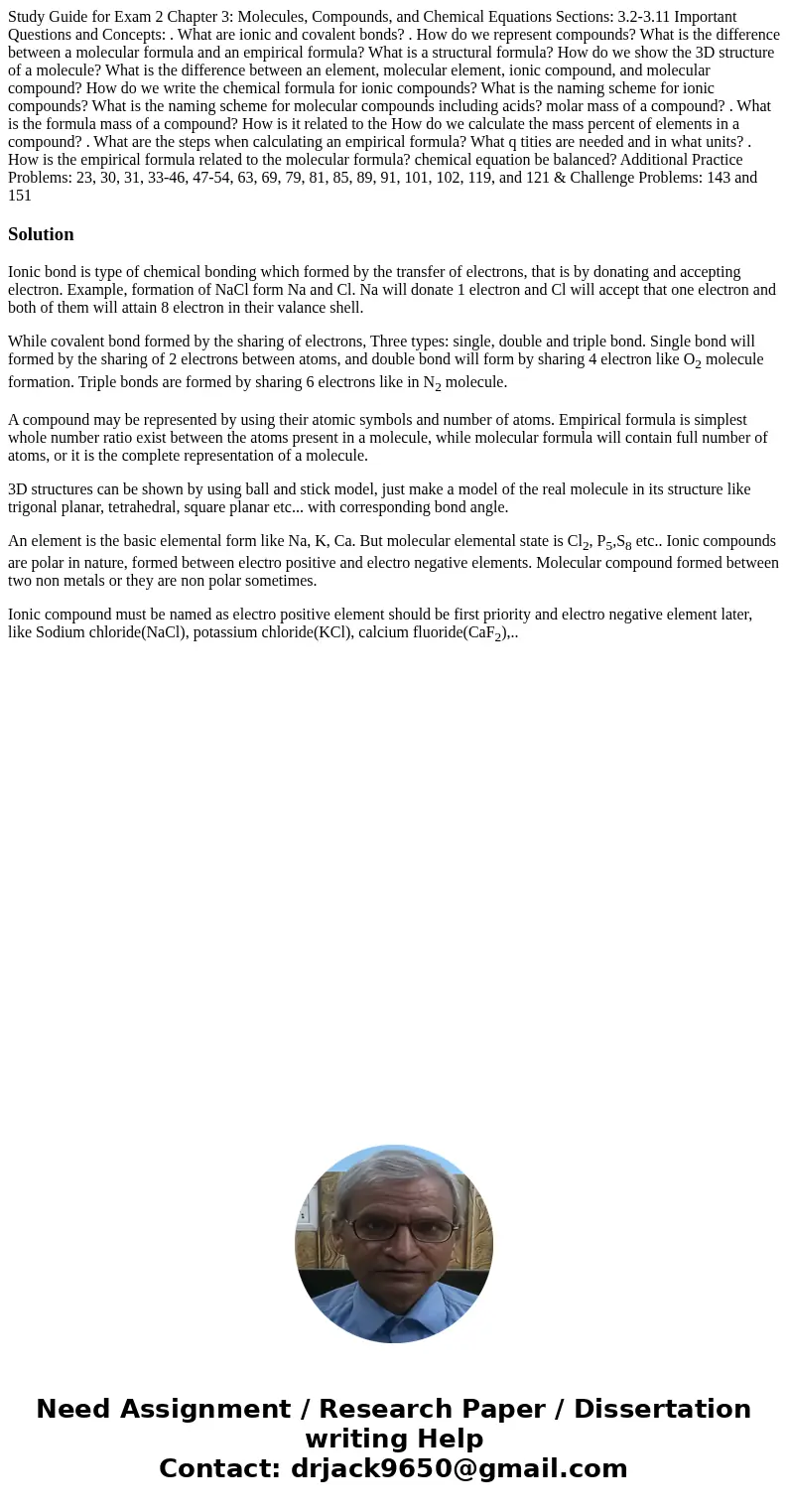Study Guide for Exam 2 Chapter 3 Molecules Compounds and Che
Solution
Ionic bond is type of chemical bonding which formed by the transfer of electrons, that is by donating and accepting electron. Example, formation of NaCl form Na and Cl. Na will donate 1 electron and Cl will accept that one electron and both of them will attain 8 electron in their valance shell.
While covalent bond formed by the sharing of electrons, Three types: single, double and triple bond. Single bond will formed by the sharing of 2 electrons between atoms, and double bond will form by sharing 4 electron like O2 molecule formation. Triple bonds are formed by sharing 6 electrons like in N2 molecule.
A compound may be represented by using their atomic symbols and number of atoms. Empirical formula is simplest whole number ratio exist between the atoms present in a molecule, while molecular formula will contain full number of atoms, or it is the complete representation of a molecule.
3D structures can be shown by using ball and stick model, just make a model of the real molecule in its structure like trigonal planar, tetrahedral, square planar etc... with corresponding bond angle.
An element is the basic elemental form like Na, K, Ca. But molecular elemental state is Cl2, P5,S8 etc.. Ionic compounds are polar in nature, formed between electro positive and electro negative elements. Molecular compound formed between two non metals or they are non polar sometimes.
Ionic compound must be named as electro positive element should be first priority and electro negative element later, like Sodium chloride(NaCl), potassium chloride(KCl), calcium fluoride(CaF2),..

 Homework Sourse
Homework Sourse